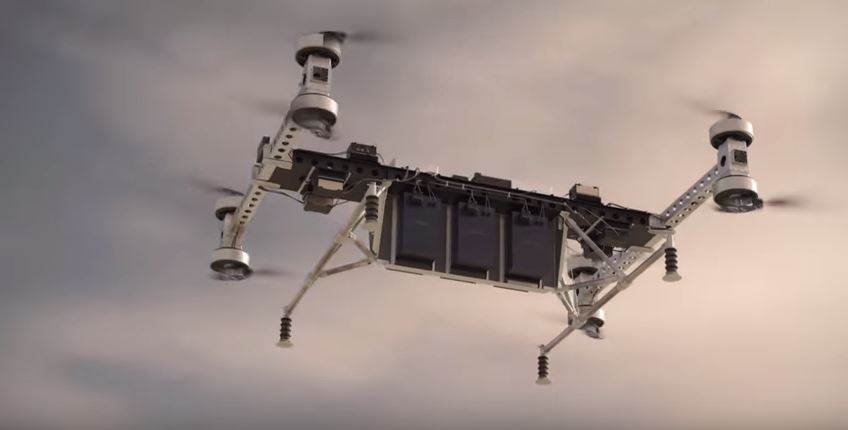

The electric vertical-takeoff-and-landing multi-copter UAV is designed to carry up to 500 pounds
The prototype aims to further develop and mature the building blocks of autonomy and electric propulsion
CHICAGO, Jan. 10, 2018 /PRNewswire/ — Boeing [NYSE: BA] today unveiled a new unmanned electric vertical-takeoff-and-landing (eVTOL) cargo air vehicle (CAV) prototype that will be used to test and evolve Boeing’s autonomy technology for future aerospace vehicles. It is designed to transport a payload up to 500 pounds for possible future cargo and logistics applications.
“This flying cargo air vehicle represents another major step in our Boeing eVTOL strategy,” said Boeing Chief Technology Officer Greg Hyslop. “We have an opportunity to really change air travel and transport, and we’ll look back on this day as a major step in that journey.”
In less than three months, a team of engineers and technicians across the company designed and built the CAV prototype. It successfully completed initial flight tests at Boeing Research & Technology’s Collaborative Autonomous Systems Laboratory in Missouri.
Boeing researchers will use the prototype as a flying test bed to mature the building blocks of autonomous technology for future applications. Boeing HorizonX, with its partners in Boeing Research & Technology, led the development of the CAV prototype, which complements the eVTOL passenger air vehicle prototype aircraft in development by Aurora Flight Sciences, a company acquired by Boeing late last year.
“Our new CAV prototype builds on Boeing’s existing unmanned systems capabilities and presents new possibilities for autonomous cargo delivery, logistics and other transportation applications,” said Steve Nordlund, Boeing HorizonX vice president. “The safe integration of unmanned aerial systems is vital to unlocking their full potential. Boeing has an unmatched track record, regulatory know-how and systematic approach to deliver solutions that will shape the future of autonomous flight.”
Powered by an environmentally-friendly electric propulsion system, the CAV prototype is outfitted with eight counter rotating blades allowing for vertical flight. It measures 15 feet long (4.57 meters), 18 feet wide (5.49 meters) and 4 feet tall (1.22 meters), and weighs 747 pounds (339 kilograms).
height=350Company expands AI order-taking solution to tackle rising labor costs and improve customer experience Hi…
Outperforming competitors like OpenAI and ElevenLabs across standard datasets and specialized jargon recognition, Jargonic sets…
NVIDIA announced KAI Scheduler, the open-source version of the NVIDIA Run:ai Scheduler, available as a…
Partnership will deliver revolutionary, emissions-free travel in the UK, including greater connectivity for Virgin Atlantic…
New Vicor DCM3717 and DCM3735 DC-DC power modules support the growing trend of 48V-centric power…
DigiKey, a leading global commerce distributor offering the largest selection of technical components and automation…